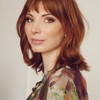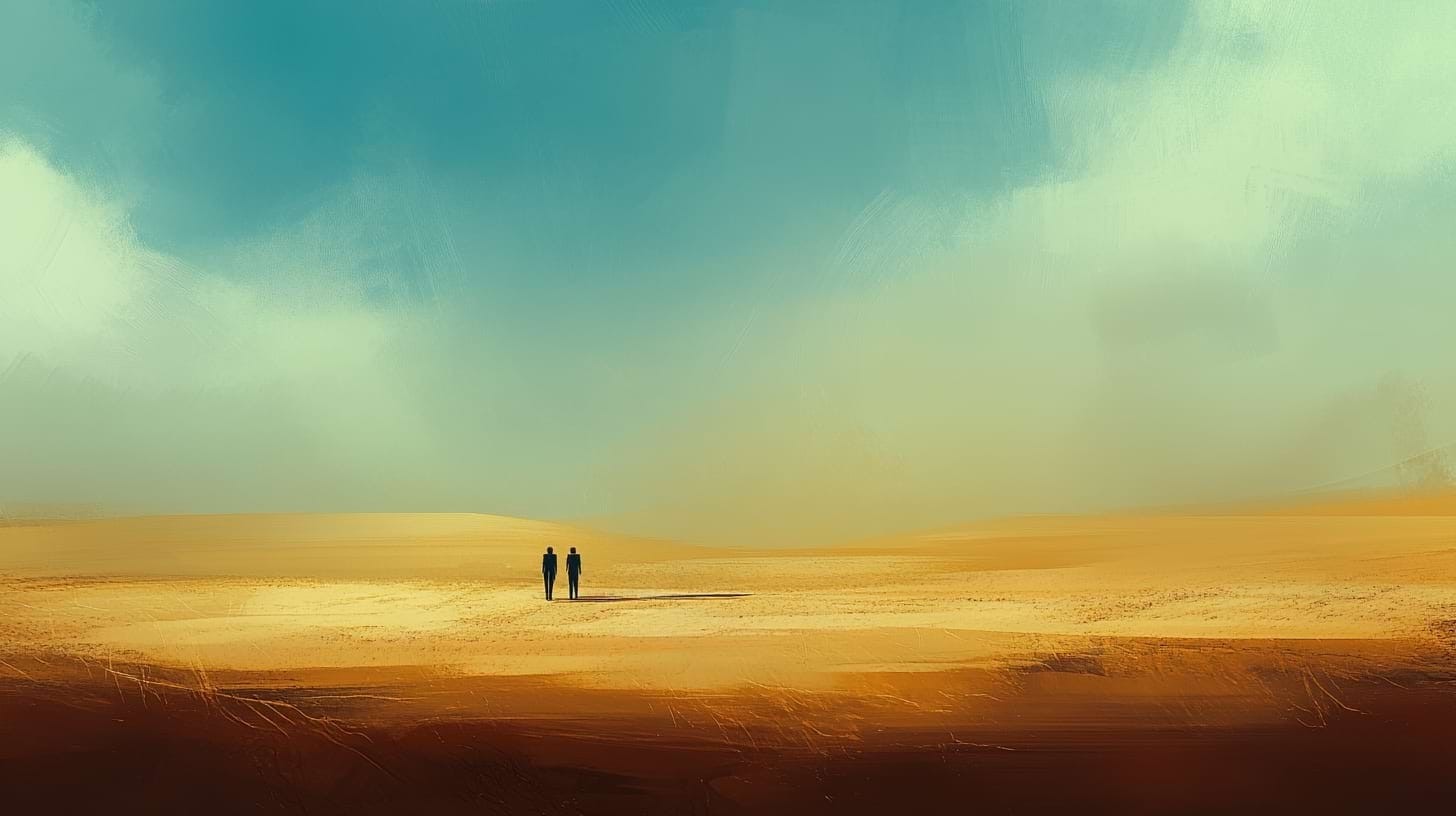Master Every Camera Shot: Your Essential Guide to Filmmaking Techniques
Camera shots go beyond technical execution; they are storytelling instruments. They can transform a simple scene into a visually compelling narrative. From the way a camera frames a subject to the angles and movements that capture a scene, these elements shape the visual language of cinema.


Camera shots are the building blocks of a film's visual language, shaping how the story unfolds on screen. Each shot type, whether a close-up, wide shot, or anything in between, uniquely conveys emotions, sets the tone, and guides the audience’s perspective. Mastery of these techniques allows filmmakers to elevate their storytelling, transforming simple scenes into dynamic, immersive experiences. By thoughtfully selecting and composing shots, directors can create visually striking films that resonate deeply with viewers, making every frame a critical element in the overall cinematic trip.
Camera Shot Types 🎥
Camera framing goes beyond aesthetics; it's a tool for conveying emotion and perspective. Understanding camera shot examples is crucial for crafting compelling narratives. From the iconic dolly zoom in Hitchcock's "Vertigo" (1958) to the symmetrical framing in Wes Anderson's works, each shot composition tells a story.
Modern filmmakers continue to push boundaries. Emmanuel Lubezki's flowing camera work in "Birdman" (2014) gives the illusion of a single take throughout the film, while Roger Deakins' cinematography in "1917" (2019) takes this concept even further.
Shot size matters greatly—choosing the right one will set the emotional tone of your scene and help your audience connect with the characters.
Let's dive into the types of camera shots:
The Establishing Shot
It orients viewers within a new scene or location. Stanley Kubrick's iconic opening of "The Shining" (1980), following Jack's car through winding mountain roads, not only establishes the hotel's isolation but foreshadows the psychological journey ahead.
The Extreme Wide Shot (ELS)
It paints a grand canvas, dwarfing subjects within vast landscapes. Think of the sweeping desert vistas in David Lean's "Lawrence of Arabia" (1962), where characters become mere specks against the awe-inspiring backdrop, setting the epic tone of the narrative.
The Wide Shot (WS)/Long Shot (LS)
It offers a broad view of the scene that contextualizes characters within their environment. These shots typically frame subjects from head to toe, with ample space around them to showcase the surrounding setting. The power of wide shots lies in their ability to establish scale, atmosphere, and spatial relationships. Consider the opening sequence of Ridley Scott's "Blade Runner" (1982), where sweeping wide shots of a dystopian Los Angeles immediately immerse viewers in the film's gritty, futuristic world.
Full Shot (FS)
It captures characters from head to toe, providing a complete view of their physicality and surroundings. Akira Kurosawa masterfully employed this technique in "Seven Samurai" (1954), using full shots to emphasize the warriors' stances and the dynamics between characters.
The Medium Long Shot (MLS)/Medium Wide Shot (MWS)
It frames subjects from roughly the knees up. This versatile shot balances detail with context, as seen in Quentin Tarantino's "Pulp Fiction" (1994) diner scenes, where it captures both character interactions and the retro setting.
The Cowboy Shot
These shots frame characters from mid-thigh up, earned its moniker from classic Westerns. John Ford's "The Searchers" (1956) exemplifies this, using the shot to showcase John Wayne's iconic stance and holstered pistols, emphasizing the rugged individualism of the genre.

Medium Shot (MS)
It balances environment and character, often used for dialogue scenes. The dinner table scenes in "The Godfather" (1972) masterfully use medium shots to capture character interactions while maintaining the tense atmosphere.
Medium Close-Up (MCU)
It frames subjects from the chest up, ideal for capturing facial expressions while maintaining some environmental context. Martin Scorsese's use of MCUs in "Taxi Driver" (1976) allows viewers to intimately experience Travis Bickle's psychological descent.
Close-Ups (CU)
These intimate shots focus on a character's face or a specific detail and are often used for emotional emphasis. The extreme close-up of Jack Nicholson's face in "The Shining" (1980) is an iconic example that intensifies the character's descent into madness.
Extreme Close-Ups (ECU)
These shots magnify minute details, often for dramatic effect. Remember the eye in "Blade Runner" (1982)? That's an extreme close-up that adds to the film's themes of perception and reality.
The Role of Camera Angles and Perspectives 📐
Film camera angles and camera perspectives are powerful tools that shape the viewer's perception of a scene:
• 🦅 High Angle: Shooting from above can make subjects appear vulnerable or insignificant. Alfred Hitchcock's "Vertigo" (1958) famously used high shot angles to induce a sense of dizziness and unease.
• 🐜 Low Angle: Filming from below can make subjects appear powerful or intimidating. Think of how Orson Welles used low angles in "Citizen Kane" (1941) to emphasize Charles Foster Kane's domineering personality.
• 🌀 Dutch Angle: Tilting the camera creates a sense of disorientation or unease. Carol Reed's "The Third Man" (1949) extensively used Dutch angles to reflect the moral ambiguity and confusion of post-war Vienna.
• 👀 Point-of-View (POV): This film camera shot puts the audience in the character's shoes. The opening sequence of "Halloween" (1978), shot entirely from the killer's POV, is a masterclass in building tension through perspective.
• 👥 Over-the-Shoulder (OTS): This shot is often used in dialogue scenes to create a sense of intimacy and connection between characters. "The Silence of the Lambs" (1991) uses OTS shots effectively in the intense conversations between Clarice Starling and Hannibal Lecter.
Shot Composition and Framing Techniques: The Visual Language of Cinema
In cinematography, shot composition, and framing techniques form the fundamental grammar of visual storytelling. These principles, when mastered, allow filmmakers to guide the viewer's eye, evoke emotions, and convey narrative subtleties without uttering a single word.
The Rule of Thirds 📏
It stands as a cornerstone of shot composition. Imagine dividing the frame into a 3x3 grid; the intersections of these lines create focal points that naturally draw the viewer's attention. Wes Anderson's meticulous compositions in "The Grand Budapest Hotel" (2014) exemplify this principle, with characters and key elements often perfectly aligned along these thirds.
Leading Lines ➡️
Leading lines serve as visual pathways, directing the audience's gaze to specific areas of the frame. Stanley Kubrick's "2001: A Space Odyssey" (1968) masterfully employs leading lines in its spaceship interiors, using the curve of walls and corridors to draw attention to characters or important plot elements. This technique not only guides the viewer's focus but also enhances the sense of depth and space within the two-dimensional frame.
Framing Within the Frame 🖼️
It's another powerful technique that isolates subjects and adds layers of meaning. In Wong Kar-wai's "In the Mood for Love" (2000), characters are often viewed through doorways or reflected in mirrors, visually reinforcing themes of isolation and unspoken desire. This approach to camera framing can create a sense of voyeurism or confinement, depending on the context.
The Concept of Visual Weight ⚖️
It plays a crucial role in shot composition. Larger or brighter elements naturally draw more attention, and their placement within the frame can create balance or intentional imbalance. Cinematographer Roger Deakins often employs this principle, as seen in the stark silhouettes against vibrant backgrounds in "Blade Runner 2049" (2017).
Negative Space ⬜️
When it is used effectively, can be as powerful as the subject itself. Ingmar Bergman's "Persona" (1966) uses expansive negative space to heighten psychological tension and emphasize character isolation.
The Golden Ratio 🌀
A mathematical concept dating back to ancient Greece finds its place in cinematic composition as well. This ratio, approximately 1:1.618, is often considered aesthetically pleasing and can be found in nature. Some filmmakers, like Darren Aronofsky in "The Fountain" (2006), have explicitly used this ratio in their shot compositions to create visually harmonious frames.
Depth of Field Manipulation 🌫️
It's another crucial aspect of shot framing. A shallow depth of field, where only a small plane of the image is in focus, can direct attention to specific elements while creating a dreamy or intimate atmosphere. Conversely, deep focus, as famously employed by Orson Welles in "Citizen Kane" (1941), allows for complex compositions where both foreground and background elements remain sharp.
Color Theory 🎨
It also plays a significant role in shot composition. The strategic use of color can create visual harmony, contrast, or symbolism within the frame. Cinematographer Vittorio Storaro's work in "Apocalypse Now" (1979) demonstrates how color can be used to represent different psychological states and narrative themes.
Dynamic Symmetry 🔄
This is a more complex compositional technique, that involves arranging elements according to geometric principles. While less commonly used, films like Wes Anderson's "The Royal Tenenbaums" (2001) employ this approach to create visually striking and meticulously balanced frames.
As you develop your shot composition guide, remember that these principles are not rigid rules but tools to be used creatively. The true art lies in knowing when to apply these techniques and when to subvert them for dramatic effect. Directors like Jean-Luc Godard made their mark by deliberately breaking compositional norms, challenging viewer expectations, and creating a new visual language.
The ability to "see" a well-composed shot remains a skill honed through study, practice, and a keen understanding of visual storytelling. Ultimately, effective shot composition and framing should serve the story.
Cinematic Shots and Advanced Techniques 🚁
Using camera shot techniques is essential for crafting visually compelling and engaging filmmaking camera shots. Beyond static framing, dynamic camera movements add another layer of storytelling and create a more engaging experience for the audience.
• 🚶♂️Tracking Shots: These shots follow the subject as they move. For example, the opening scene of "Touch of Evil" (1958) features a legendary 3-minute, 20-second unbroken tracking shot.
• 🛤️ Dolly Shots: Similar to tracking shots, but using a dolly on tracks for smoother movement. Martin Scorsese's famous Copacabana shot in "Goodfellas" (1990) is a prime example, taking a full day to rehearse and shoot.
• 🔍 Zoom Shots: These types of shots in film change the focal length of the lens during the shot. The zoom shot focuses the audience's attention on a specific element within the scene, like the sudden zooms in Quentin Tarantino's "Kill Bill" (2003), which heightens dramatic tension.
• 🌪️ Steadicam Shots: These shots provide smooth movement even on uneven terrain. The maze chase in "The Shining" (1980) was one of the first uses of Steadicam in a feature film, revolutionizing camera movement.
• 🚁 Aerial Shots: Drones have made aerial shots more accessible, but helicopter shots are still used for higher-end productions. The opening shot of "La La Land" (2016) used a helicopter to capture the famous freeway dance sequence.
Simplify Camera Shot Planning with Filmustage
From the basic types of shots to advanced techniques, each element contributes to the visual language of cinema. Planning camera shots for a film can be daunting, especially with so many technical aspects to consider. Filmustage simplifies this process by offering AI-driven tools that streamline shot planning and execution.
With Filmustage, you can quickly break down the camera requirements for each scene, identifying the types of shots and specific location needs in seconds. This AI platform is actively used by operators and directors of photography, for example, Callan Green utilized Filmustage for filming the acclaimed series "The Gentlemen" (2023).
Armed with Filmustage's AI-generated schedule, you can anticipate equipment needs well in advance and pre-plan camera positions for every scene, ensuring a smooth and efficient shoot. Plus, Filmustage integrates Google Maps, making it easy to scout potential filming locations without leaving your desk. By collaborating with your team through Filmustage's Team Access feature, you can share insights and adjust shot plans in real-time, ensuring everyone is on the same page throughout the production process.
From Breakdown to Budget in Clicks
Save time, cut costs, and let Filmustage’s AI handle the heavy lifting — all in a single day.